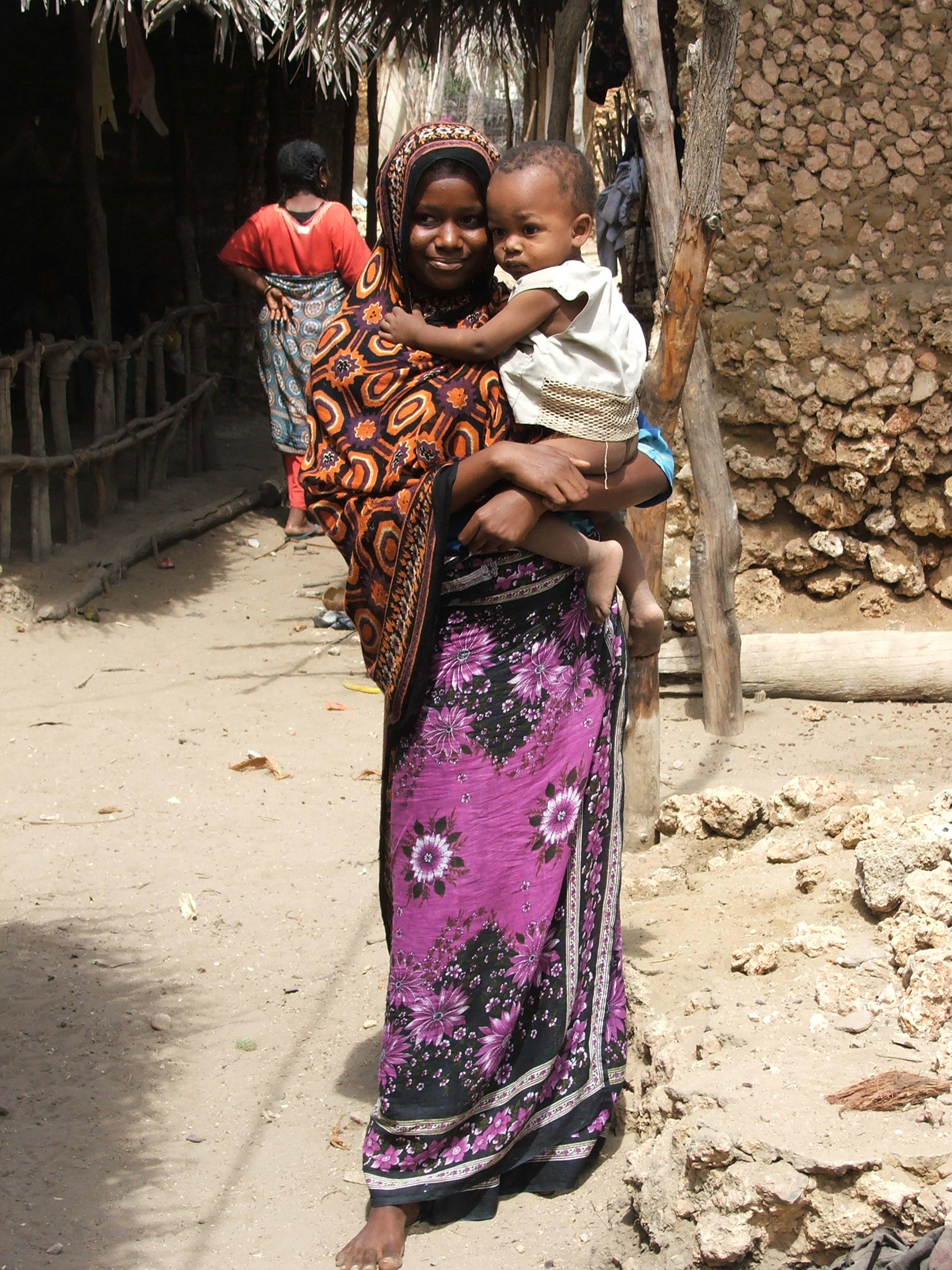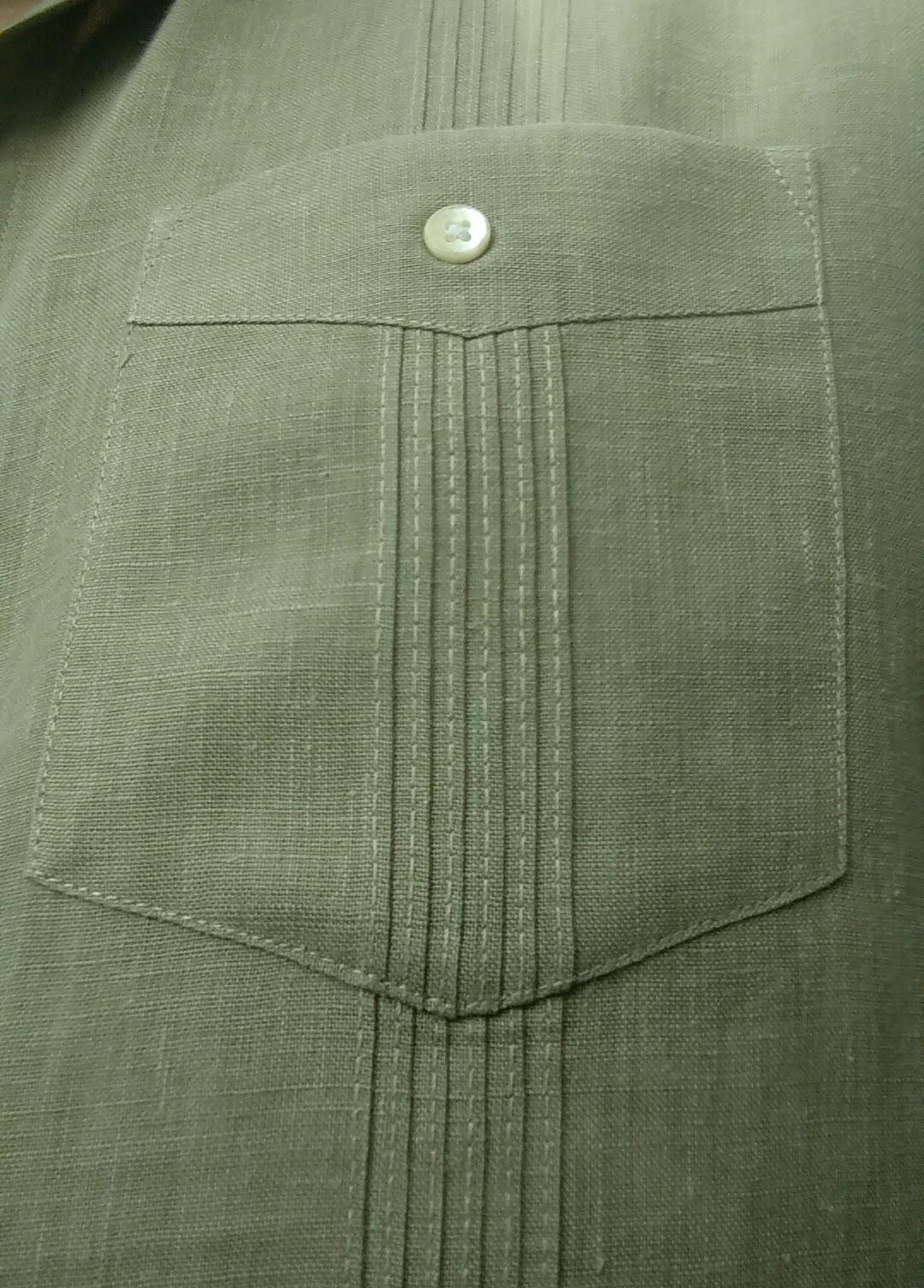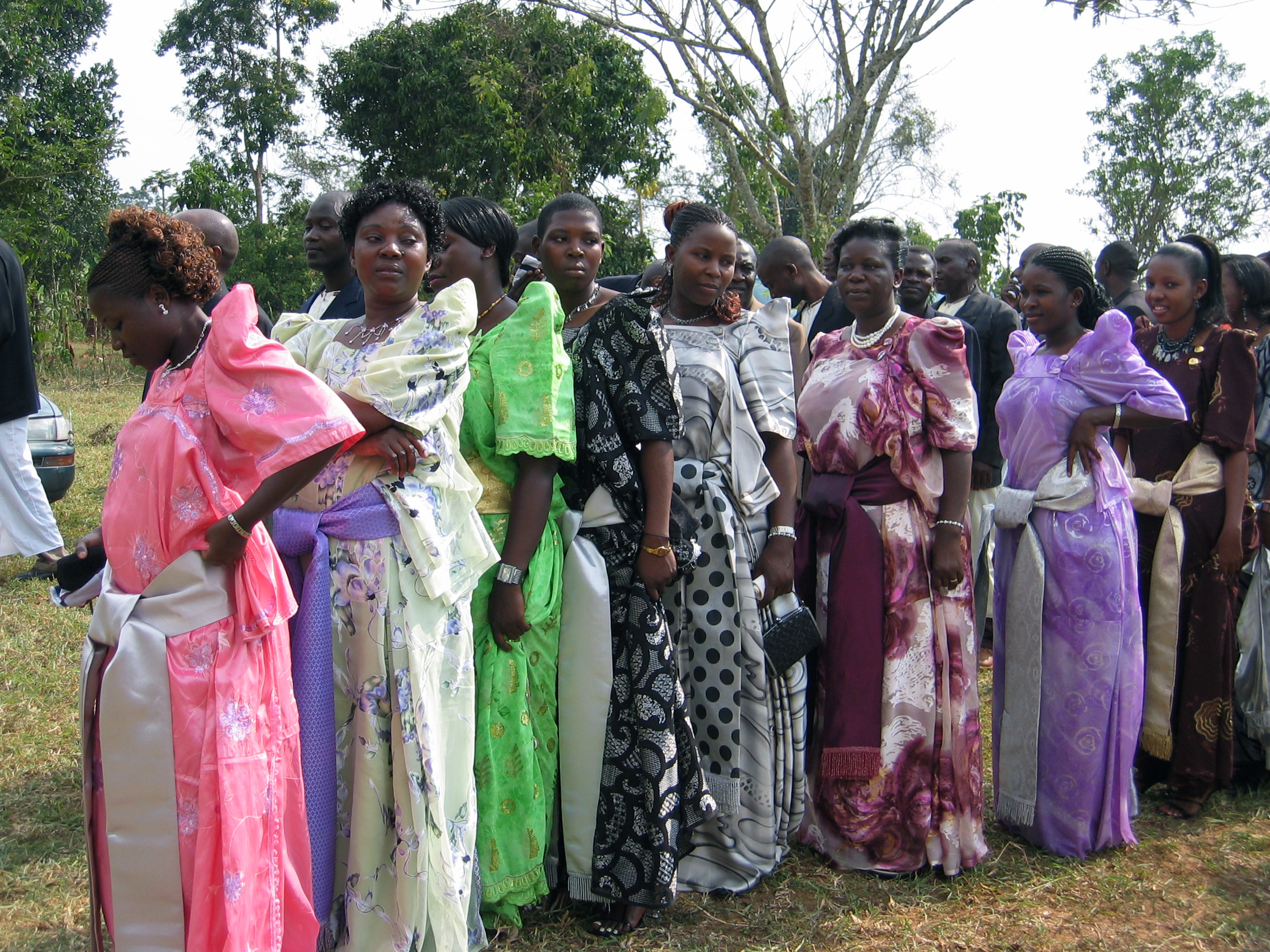|
African Fashion
African clothing is the traditional clothing worn by the peoples of Africa. African clothing and fashion is a diverse topic that is able to provide a look into different African cultures. Clothing varies from brightly colored textiles, to abstractly embroidered robes, to colorful beaded bracelets and necklaces. Since Africa is such a large and diverse continent, traditional clothing differs throughout each country. For example, many countries in West Africa have a "distinct regional dress styles that are the products of long-standing textile crafts in weaving, dyeing, and printing", but these traditions are still able to coexist with western styles. A large contrast in African fashion is between rural and urban societies. Urban societies typically are exposed more to trade and the changing world, while it takes more time for new western trends to get to rural areas. By region In Northeastern Africa, particularly in Egypt, styles of traditional women's clothing have been influe ... [...More Info...] [...Related Items...] OR: [Wikipedia] [Google] [Baidu] |
East Africa
East Africa, Eastern Africa, or East of Africa, is the eastern subregion of the African continent. In the United Nations Statistics Division scheme of geographic regions, 10-11-(16*) territories make up Eastern Africa: Due to the historical Omani Empire and colonial territories of the British East Africa Protectorate and German East Africa, the term ''East Africa'' is often (especially in the English language) used to specifically refer to the area now comprising the three countries of Kenya, Tanzania, and Uganda. However, this has never been the convention in many other languages, where the term generally had a wider, strictly geographic context and therefore typically included Djibouti, Eritrea, Ethiopia, and Somalia.Somaliland is not included in the United Nations geoscheme, as it is internationally recognized as a part of Somalia. *Tanzania, Kenya, Uganda, Rwanda, Burundi, Democratic Republic of Congo and South Sudan are members of the East African Community. The firs ... [...More Info...] [...Related Items...] OR: [Wikipedia] [Google] [Baidu] |
Habesha Kemis
Habesha kemis is the traditional attire of Habesha women.Lisa L. Schoonover ''The Indigo Butterfly'' Page 114 2012 "The habasha kemis is a dress is made from traditionally using cotton and its generally grouped in the catogery of yahager lebse. Shiny threads called tilet are woven into the white fabric that creates an elegant effect. The hem of the dress is quite ornated by the tilet. “It takes about three weeks for them to make the dress. I had to special order it,” Sherine explains." The ankle length dress is usually worn by Ethiopian and Eritrean women at formal events, holidays and invitations. But it comes in many forms nowadays. It is made of cotton fabric, and typically comes in white, grey or beige shades. Many women also wrap a shawl called a ''netela'' around the formal dress. See also *Bernos *Coffee ceremony *Culture of Ethiopia *Culture of Eritrea *Dashiki *Ethiopian suit * Gabi * Kaftan (boubou) References External links Ethiopian clothing at Montgomery Blair ... [...More Info...] [...Related Items...] OR: [Wikipedia] [Google] [Baidu] |
Ethiopian Suit
An Ethiopian suit or Eritrean suit is the name given in America to the traditional formal wear of the men of Ethiopia and Eritrea.Janet Jaymes Dirty Laundry: A Memoir 2006 - Page 89 "Because we were celebrating a special occasion, you chose to dress up for me in an all white, authentic Ethiopian and Eritrean suit as if you were European royalty going to a party at the United Nations. I dressed in an electric blue jumpsuit I had" It consists of a long sleeve, knee-length shirt, and matching pants. Most shirts are made with a Mandarin, band, or Nehru collar. The suit is made of chiffon, which is a sheer silk or rayon cloth. A shawl called a ''netela'' or a ''kuta'' is wrapped around the suit. During the opening ceremony of each Summer Olympics during Parade of Nations, the Ethiopian team marched in white suits. For informal events, men wear the Ethiopian dashiki. The main difference between the dashiki and Ethiopian and Eritrean suits is the collar. The dashiki does not have a co ... [...More Info...] [...Related Items...] OR: [Wikipedia] [Google] [Baidu] |
Ethiopia
Ethiopia, , om, Itiyoophiyaa, so, Itoobiya, ti, ኢትዮጵያ, Ítiyop'iya, aa, Itiyoppiya officially the Federal Democratic Republic of Ethiopia, is a landlocked country in the Horn of Africa. It shares borders with Eritrea to the north, Djibouti to the northeast, Somalia to the east and northeast, Kenya to the south, South Sudan to the west, and Sudan to the northwest. Ethiopia has a total area of . As of 2022, it is home to around 113.5 million inhabitants, making it the 13th-most populous country in the world and the 2nd-most populous in Africa after Nigeria. The national capital and largest city, Addis Ababa, lies several kilometres west of the East African Rift that splits the country into the African and Somali tectonic plates. Anatomically modern humans emerged from modern-day Ethiopia and set out to the Near East and elsewhere in the Middle Paleolithic period. Southwestern Ethiopia has been proposed as a possible homeland of the Afroasiatic langua ... [...More Info...] [...Related Items...] OR: [Wikipedia] [Google] [Baidu] |
Horn Of Africa
The Horn of Africa (HoA), also known as the Somali Peninsula, is a large peninsula and geopolitical region in East Africa.Robert Stock, ''Africa South of the Sahara, Second Edition: A Geographical Interpretation'', (The Guilford Press; 2004), p. 26 Located on the easternmost part of the African mainland, it is the fourth largest peninsula in the world. It is composed of Ethiopia, Eritrea, Somalia and Djibouti; broader definitions also include parts or all of Kenya, Sudan, South Sudan, and Uganda. The term Greater Horn Region (GHR) can additionally include Burundi, Rwanda, and Tanzania. It lies along the southern boundary of the Red Sea and extends hundreds of kilometres into the Guardafui Channel, Gulf of Aden, and Indian Ocean and shares a maritime border with the Arabian Peninsula of Western Asia. Names This peninsula has been known by various names. Ancient Greeks and Romans referred to it as Regio Aromatica or Regio Cinnamonifora due to the aromatic plants or as Regio I ... [...More Info...] [...Related Items...] OR: [Wikipedia] [Google] [Baidu] |
Guayabera
The guayabera (), also known as ''camisa de Yucatán'' (Yucatán shirt), is a men's summer shirt, worn outside the trousers, distinguished by two vertical rows of closely sewn pleats running the length of the front and back of the shirt. Typically made of linen, silk, or cotton, and appropriate for hot and/or humid weather, guayaberas are popular in the Caribbean (especially Cuba, the Dominican Republic, Jamaica, and Puerto Rico), Mexico, Central America, South America, Southeast Asia, the south of Spain, and Portugal. Design The design of a typical guayabera is distinguished by several details: * Either two or four patch pockets and two vertical rows of '' alforzas'' (fine, tiny pleats, usually 10, sewn closely together) run down the front and three down the back of the shirt. The pockets are detailed with ''alforzas'' that are identical to, and aligned with, the ''alforzas'' on the body of the shirt. * Long or short sleeves, the more common being the short-sleeved version, ha ... [...More Info...] [...Related Items...] OR: [Wikipedia] [Google] [Baidu] |
Zimbabwe
Zimbabwe (), officially the Republic of Zimbabwe, is a landlocked country located in Southeast Africa, between the Zambezi and Limpopo Rivers, bordered by South Africa to the south, Botswana to the south-west, Zambia to the north, and Mozambique to the east. The capital and largest city is Harare. The second largest city is Bulawayo. A country of roughly 15 million people, Zimbabwe has 16 official languages, with English, Shona language, Shona, and Northern Ndebele language, Ndebele the most common. Beginning in the 9th century, during its late Iron Age, the Bantu peoples, Bantu people (who would become the ethnic Shona people, Shona) built the city-state of Great Zimbabwe which became one of the major African trade centres by the 11th century, controlling the gold, ivory and copper trades with the Swahili coast, which were connected to Arab and Indian states. By the mid 15th century, the city-state had been abandoned. From there, the Kingdom of Zimbabwe was established, fol ... [...More Info...] [...Related Items...] OR: [Wikipedia] [Google] [Baidu] |
Madiba Shirt
A Madiba shirt is a loose-fitting silk shirt, usually adorned in a bright and colourful print. It became known in the 1990s, when Nelson Mandela—then elected President of South Africa—added the item to his regular attire. Mandela popularised this type of shirt, elevating the seemingly casual garment to formal situations. Design A form of casual wear, Madiba shirts are loose-fitting, usually worn without a necktie and untucked from trousers. It is adapted from Indonesian clothing, and generally made of cotton or silk patterned with vivid colours. Mandela was said to prefer earthier tones for the shirt, though Madiba shirts with bright colors have endured in popularity. History Yusuf Surtee, a clothing-store owner who supplied Mandela with outfits for decades, said the Madiba design is based on Mandela's request for a shirt like Indonesian president Suharto's attire. Fashion designer Desré Buirski presented this type of shirt (and her contact information) to Mandela as a gi ... [...More Info...] [...Related Items...] OR: [Wikipedia] [Google] [Baidu] |
South Africa
South Africa, officially the Republic of South Africa (RSA), is the southernmost country in Africa. It is bounded to the south by of coastline that stretch along the South Atlantic and Indian Oceans; to the north by the neighbouring countries of Namibia, Botswana, and Zimbabwe; and to the east and northeast by Mozambique and Eswatini. It also completely enclaves the country Lesotho. It is the southernmost country on the mainland of the Old World, and the second-most populous country located entirely south of the equator, after Tanzania. South Africa is a biodiversity hotspot, with unique biomes, plant and animal life. With over 60 million people, the country is the world's 24th-most populous nation and covers an area of . South Africa has three capital cities, with the executive, judicial and legislative branches of government based in Pretoria, Bloemfontein, and Cape Town respectively. The largest city is Johannesburg. About 80% of the population are Black South Afri ... [...More Info...] [...Related Items...] OR: [Wikipedia] [Google] [Baidu] |
Southern Africa
Southern Africa is the southernmost subregion of the African continent, south of the Congo and Tanzania. The physical location is the large part of Africa to the south of the extensive Congo River basin. Southern Africa is home to a number of river systems; the Zambezi River being the most prominent. The Zambezi flows from the northwest corner of Zambia and western Angola to the Indian Ocean on the coast of Mozambique. Along the way, the Zambezi River flows over the mighty Victoria Falls on the border between Zambia and Zimbabwe. Victoria Falls is one of the largest waterfalls in the world and a major tourist attraction for the region. Southern Africa includes both subtropical and temperate climates, with the Tropic of Capricorn running through the middle of the region, dividing it into its subtropical and temperate halves. Countries commonly included in Southern Africa include Angola, Botswana, the Comoros, Eswatini, Lesotho, Madagascar, Malawi, Mauritius, Mozambique, Namib ... [...More Info...] [...Related Items...] OR: [Wikipedia] [Google] [Baidu] |
Gomesi
A gomesi or busuuti is a colorful floor-length dress. It is the most commonly used costume for women in Buganda and Busoga. Traditional male attire is the kanzu. Origins The best scholarship traces the origins of the Gomesi to 1905. The dress was introduced by a Goan designer, Caetano Gomes, then resident in Uganda which was a British Protectorate at the time. The dress did not gain wide use until the wife of Daudi Cwa II of Buganda, the Kabaka or king over Buganda, wore it at her 18-year-old husband's official coranation (he had been kabaka since age 1) in 1914.Richard J. Reid. ''A History of Modern Uganda''. Cambridge: Cambridge university Press, 2017. p. 40 Design The gomesi is a floor-length, brightly colored cloth dress with a square neckline and short, puffed sleeves. The dress is tied with a sash placed below the waist over the hips. The gomesi has two buttons on the left side of the neckline. Most gomesi are made of silk, cotton, or linen fabric, with silk being t ... [...More Info...] [...Related Items...] OR: [Wikipedia] [Google] [Baidu] |





